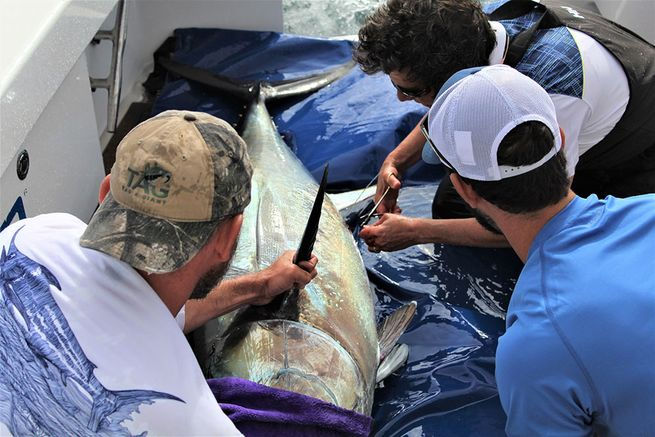Researcher Brings Popular “Tag A Giant” Bluefin Project to Pacific Waters
- Luis Roque

- Nov 6, 2018
- 1 min read
Updated: Nov 8, 2018
California anglers assist with implanting satellite tags in larger bluefins to better assess the species' reproductive behaviors
By Chris Woodward September 28, 2018

For three days in mid-September, the Coastal Conservation Association of California (CCA CAL) worked with noted bluefin tuna expert Dr. Barbara Block of Stanford University to tag seven Pacific bluefins with electronic and/or conventional tags off San Clemente Island. By using electronic tags to track the tunas’ journeys, the team can provide sophisticated spatial data to better understand their movements and determine the age at which bluefin migrate to the western Pacific to spawn in the waters off Japan and Taiwan.
“The key question is when and where do these large fish go back and spawn,”
Block says. She believes that Pacific bluefin must reach an age of 7 to 8 years (about 250 to 300 pounds) before they travel across the ocean to spawn. On the other hand, current fishery models for Pacific bluefin, developed by the International Scientific Committee for Tuna and Tuna-Like Species, estimate the age of first reproduction at 3 to 5 years. Understanding the actual spawning age is critical to the survival of the species and important in estimating their spawning or adult biomass.
One of the seven fish tagged measured 72 1/2 inches in curved length and was estimated to weigh 250 pounds. That large tuna was caught on the boat Flying Fish by CCA CAL Chairman Bill Shedd, president of the AFTCO fishing-gear company, and was transferred to the vessel Quiteña, owned by Paul Fruchbom.
... read more




Comments